Superstorm Sandy Two Years Later:
Evaluating Pre-Sandy Evacuation Decision-making Processes Among Long Beach Residents
Barbara A. Branca
Introduction
One of The National Oceanic and Atmospheric Administration (NOAA)'s Sea Grant "Coastal Storm Awareness Program" (CSAP) projects is entitled: Evaluating evacuation decision-making processes among residents of Long Beach, NY before Superstorm Sandy: Lessons for the role of authority and language in storm warnings. As one might expect, this social science project has much to do with the culture, language, and attitude of people making the profound and often emotional decision about whether or not to evacuate their home before a storm hits.
At the behest of one of our project investigators, Hofstra’s Mary Anne Trasciatti, New York Sea Grant Communications Manager, Barbara Ann Branca, interviewed a project partner, Nelly Romero. Although the project results are yet to be analyzed, this blog is designed to give the reader a sense of the project and also the perspectives and opinions of one of its partners.
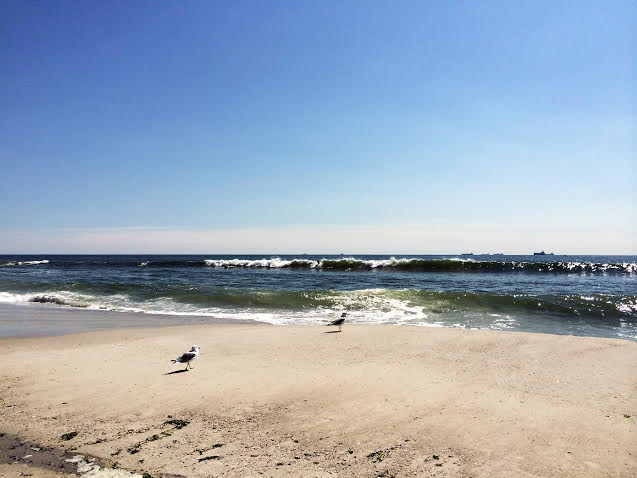
Beach at Long Beach
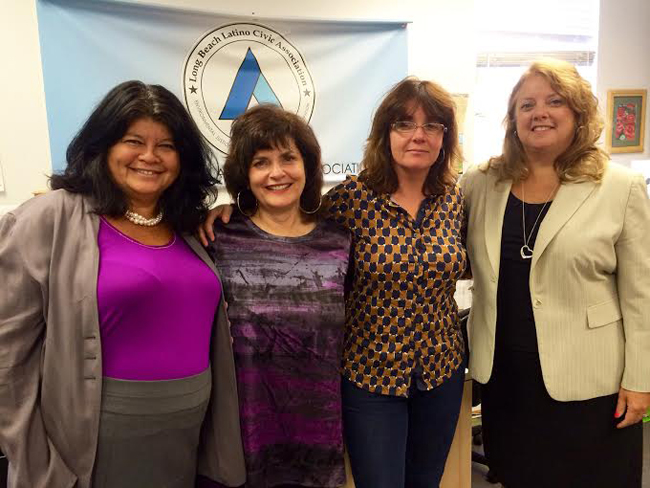
‘The gang’ at the Long Beach Latino Civic: Nelly, Barbara, Mary Anne, Helen
Barbara Ann Branca’s Blog
September 17, 2014
When Nelly Romero moved to Queens, NY, from Ecuador as a young teenager, no one could have predicted that she’d be an integral part of a Sea Grant research project on the role of authority and language in storm warnings. But after interviewing Nelly at the Long Beach Latino Civic Association, I learned that she’s a natural communicator who aided people in Long Beach’s Hispanic community after superstorm Sandy. Now she’s a case worker and interpreter during interviews conducted with certain Long Beach residents who did not heed warnings to evacuate Long Beach. The barrier island community was heavily damaged during the October 2012 storm. Why did some residents choose to stay despite forecasts of severity?
To find out why, a Sea Grant project, part of NOAA-funded Coastal Storm Awareness Program (CSAP), was designed by three investigators from Hofstra University. Dr. E. Christa Farmer (Geosciences), Dr. Mary Anne Trasciatti (Rhetoric) and Dr. Elisabeth J. Ploran (Psychology) have teamed up to analyze qualitative interviews with residents of ethnically diverse Long Beach, NY, many of whom ignored evacuation warnings before superstorm Sandy, even though the storm was being tracked with accuracy.
The research team is looking at both language barriers and cultural attitudes in affecting understanding and acceptance of risk information. The trio also decided to use interpreters for extended interviews when needed.
Nelly Romero certainly fits the bill. And then some.
As Director of Programs at the Long Beach Latino Civic Association, Nelly played a pivotal role in helping hundreds of Latino families cope with the devastation and loss caused by Sandy. For countless hours, she has listened to the unique stories. And although the interview process is ongoing, there are still some common threads that run through all the stories.
“A lot of people continued to talk after the interview was officially over. They needed to get it all out—the loss, the frustration. Sometimes it’s the little things,” says Nelly, “a missing family photo or a children’s toy that would get someone crying all over again.”
I asked Nelly how the Spanish-speaking population was getting information about the storm. Calls from the city about evacuation were in English only—a policy that the city has promised to change. According to Nelly, the most effective communicator in mass media was New Jersey Gov. Chris Christie. “When people heard him say ‘Don’t be stupid,’ people got that and made the decision to leave.”
Oddly enough, this blogger had watched and heard Christie on the Saturday morning before Sandy hit when the NJ Governor urged Jersey residents to get expert help in installing generators. Christie warned do-it-yourselfers: “If it looks STUPID, it is STUPID” and delivered that message with such visceral gusto that it still rings in my ears.
Why didn’t some people leave? Before the storm, the US Coast Guard urged people—especially with children—to evacuate, but many single, and elderly women did not.
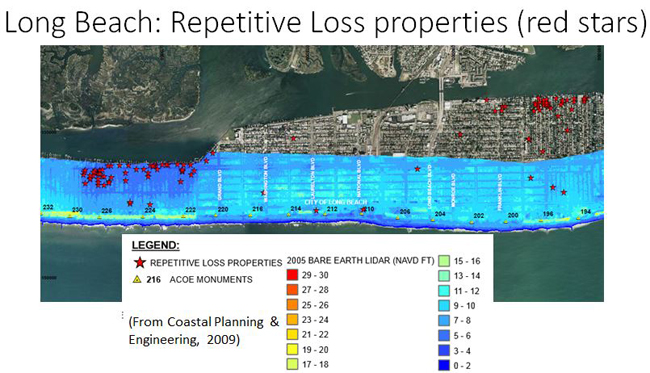
Long Beach, New York, located on a barrier island on Long Island’s south shore, has a population of 35,000 (15,000 households) that swells by at least a third in summer. Year-round residents include not only Nelly Romero, but Dr. Mary Anne Trasciatti one of the Hofstra investigators.
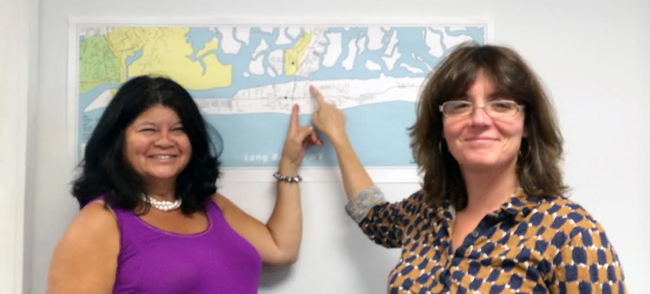
Nelly Romero (left) and Dr. Mary Anne Trasciatti point to their homes on this street map of the barrier island that makes up the city of Long Beach.
-slide- FEMA map of Long Beach showing areas of damage
A fairly large proportion of Long Beach residents live in rental properties. Several hundred families of the 15,000 households make up the Latino community. Nelly has interviewed Spanish-speaking residents from Peru, Puerto Rico, Cuba. Some are undocumented, making it impossible to work with federal agencies such as FEMA. Many are renters. Many had no insurance. Some are house cleaners who remained loyal to their clients, even when their houses were in ruin.
But there was little to no information about the evacuation in Spanish.
“We have to be prepared now. We have to provide everyone with information- in several languages, not just Spanish,” says Nelly. “The agencies need to treat everybody equally. After Sandy, just two days after the storm, people came back. The heart was still there. Everybody was ‘hands-on’. Home owners and renters alike had the same experience.”
But many renters who lived in the ground floor apartments were without insurance and were flooded. Nelly applauds the many non-profit and faith-based organizations that helped some Long Beach residents with a helping hand.
“For the future, we must learn from this tragedy. The whole community – and that means everybody – has to work together. Give me your hand. Dame la mano.”
When all of the interviews with Long Beach residents are complete and analyzed, the three researchers will report their findings. The goal is to create improved guidelines for the specific language used by government officials and weather authorities to relay coastal storm information, risk assessment, and evacuation recommendations.
Epilogue:
After the interview with Nelly Romeo, I took a ride around Long Beach, taking a moment to walk on the beautiful beach amid gulls and surfers in the mid-September sun. Evidence of new boardwalks and railings were everywhere, new roofs and stilts in place. I stopped for an iced coffee from Vinnie out on the West End. He had little damage during Sandy…his building is concrete and glass. Then I took a ride east to the marina where I’d gone out with researchers last year as they measured nitrogen levels in the waters near the Bay Park Sewage Treatment Plant periodically since Sandy. As I drove by beautiful well-kept beach cottages in Point Lookout, I realized how lucky we are—people with houses and social security numbers and insurance.

West End sign
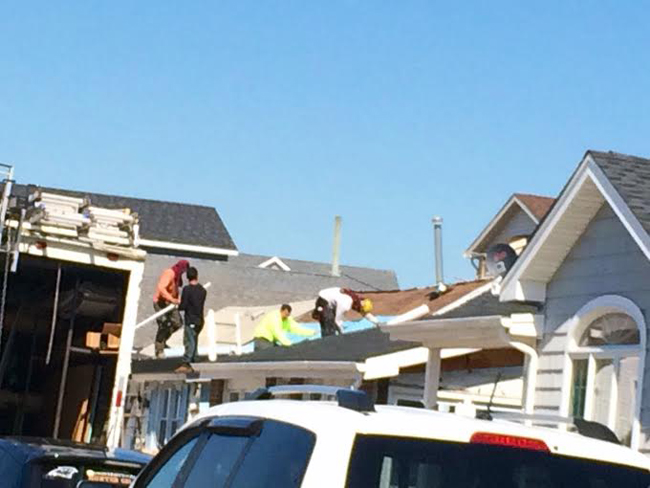
Roof construction
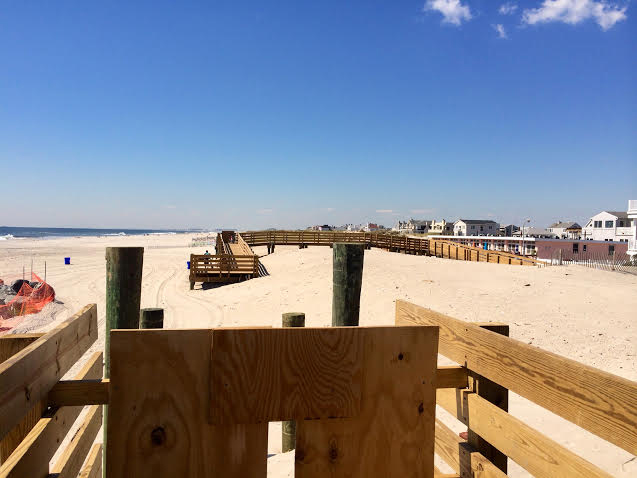
New boardwalks
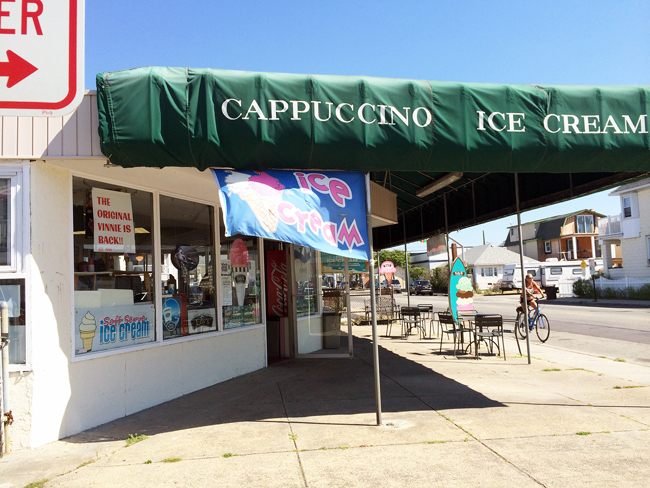
Coffee shop
About 20 minutes later, I was on the road to visit my mother on the North Shore. She was turning 89 years old that day, and I thought it most appropriate to interview her about her birthday back in September ‘38, the day the hurricane now known as the Long Island Express barreled through the Northeast causing unprecedented loss of human life and millions in damage. September 21, 1938 was the day of my mother’s 13th birthday party. It was a Saturday, when my mother had to go across busy Highlawn Avenue in Brooklyn to pick up ice cream. The weather report on the radio that morning had mentioned there was a storm, but the severity or how to prepare was not. My grandmother said the party was on anyway.
“There was thunder, lightning, rain and wind. It wasn’t too bad. But then years later I found out: IT WAS BAD,” recalls my mother. And when the tree in front of their Brooklyn house blew down, just missing her, the decision was made not to replant it. But the family did decide that it’s always a good idea to be prepared.
Give me your hand.
Dame la mano.